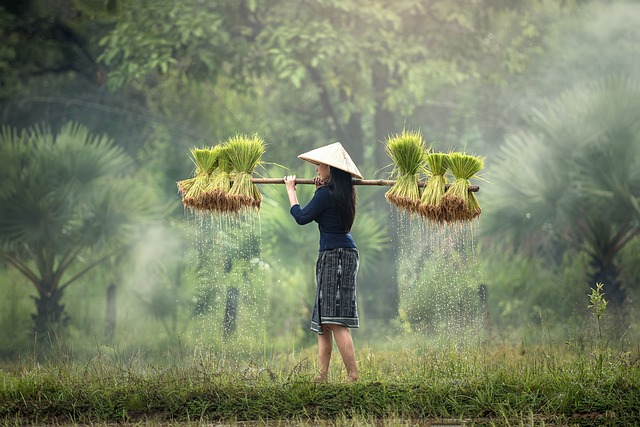In this we will discuss Secretly Cultivate For A Thousand Years Chapter 23. The internet has drastically changed the way we consume information. No longer are we bound by the limitations of print media. With a few clicks, we can have access to an inexhaustible wealth of data and knowledge. This is especially true when it comes to marketing data. No longer do marketers have to rely on educated guesses and best practices.
With the right tools, they can track, measure, and analyze every aspect of their campaigns. In this blog post, we’ll take a look at some of the most popular marketing analytics tools and platforms. We’ll also provide a few tips on how you can use data to improve your marketing efforts.
The History of Cultivation
The history of cultivation is a long and storied one, dating back thousands of years to the early days of human civilization. Cultivation was first used as a way to improve crop yields and increase food production. Over time, it became increasingly sophisticated, with different methods and techniques being developed to suit different climates and soil types. Today, cultivation is an essential part of modern agriculture, helping farmers to produce the food we need to feed the world’s growing population.
The Different Types of Cultivation
1. The Different Types of Cultivation
There are many types of cultivation, each with its own benefits and drawbacks. The most common types are:
— Aerobic: This type of cultivation requires oxygen to function and is typically used for plants that require high levels of oxygen, such as most vegetables. Aerobic cultivators are typically more expensive than their anaerobic counterparts, but they offer the advantage of being able to grow a wider variety of crops.
— Anaerobic: This type of cultivation does not require oxygen to function and is typically used for plants that can tolerate low levels of oxygen, such as some fruits and grains. Anaerobic cultivators are typically less expensive than aerobic cultivators, but they offer the disadvantage of being limited to a smaller variety of crops.
-Hydroponic: This type of cultivation uses water instead of soil to grow plants. Hydroponic cultivators are typically more expensive than both aerobic and anaerobic cultivators, but they offer the advantage of being able to grow a wide variety of crops in a relatively small space.
-Aquaponic: This type of cultivation combines hydroponics with aquaculture (fish farming). Aquaponic cultivators are typically more expensive than hydroponic cultivators, but they offer the advantage of being able to produce both fish and vegetables in a single system.
The Pros and Cons of Cultivation
Assuming you want a detailed description of the pros and cons of cultivation:
On one hand, those who choose to cultivate do so in order to better themselves. By gaining enlightenment and understanding the true nature of things, they can hope to attain a level of existence far beyond that of mortal men. On the other hand, the process is long and arduous, and requires immense dedication. There is also the danger of losing oneself in the pursuit of power.
What Foods to Eat while Cultivating
There are a few key things to remember when it comes to food and cultivation. First, you need to make sure that you’re eating enough food to sustain your body’s energy needs. This means consuming plenty of calories and nutrients. Secondly, you should focus on eating foods that will help improve your qi and blood circulation. These include dark leafy greens, seaweed, mushrooms, and certain types of fruits and nuts. Finally, it’s important to avoid foods that could potentially harm your cultivation efforts. These include alcohol, caffeine, processed sugar, and greasy or fried foods.
Secretly Cultivate For A Thousand Years Chapter 23
Recipes for Cultivation
1. Recipes for Cultivation:
-A detailed step by step guide on how to cultivate your own food.
-Learn which foods are best to grow in your area and how to rotate your crops to ensure a bountiful harvest.
-Get tips on how to start your own seedlings, care for them, and transplant them into your garden.
-Find out what common pests and diseases affect your crops and how to combat them organically.
Alternatives to Cultivation
1.1.1. Introduction
Cultivation is the process of artificially raising and growing crops or other plants. It is typically done in order to produce food, but also for other purposes such as producing fibers or drugs. Cultivation can be done with or without the use of chemicals, but often times chemicals are used in order to increase yields.
There are a number of alternative methods to cultivation that have been developed over the years. These alternatives include but are not limited to: hydroponics, Acropolis, and aquaponics. Each method has its own advantages and disadvantages that should be considered when choosing which method to use.
1.2. Hydroponics
Hydroponics is a method of cultivation that uses water instead of soil. Plants are grown in a solution of water and nutrients, and often times an air stone is used to oxygenate the water. Hydroponics has a number of advantages over traditional cultivation methods, including: increased yields, less water usage, fewer pests and diseases, and year-round production (in some cases). However, hydroponics also has some disadvantages, such as: high start-up costs, the need for careful monitoring and maintenance, and potential problems with pH balance. Overall, hydroponics is a good option for those who want to increase their yields without using traditional methods of cultivation.
1.3 Acropolis
Acropolis is a method of cultivation that uses
FAQs about cultivation
1. How long does it take to cultivate?
It takes at least 10 years to develop the basic skillet required for cultivation. However, some people may take longer or shorter, depending on their aptitude and level of commitment.
2. What is the best way to learn?
There is no one-size-fits-all answer to this question. Some people prefer to learn by themselves, while others find it helpful to join a cultivation group or study under a more experienced cultivator.
3. What are the benefits of cultivation?
Cultivation can improve physical health, mental well-being, and spiritual development. It can also lead to insights about the nature of reality and an increased ability to manifest one’s desires.
Conclusion
There’s a lot of data out there in the world, and it can be tough to sift through it all to find what you need. That’s why we’ve compiled this list of resources on Secretly Cultivate for a Thousand Years so that you can easily find everything you need to know about the novel in one place. We hope this list helps you out and that you enjoy the novel!










